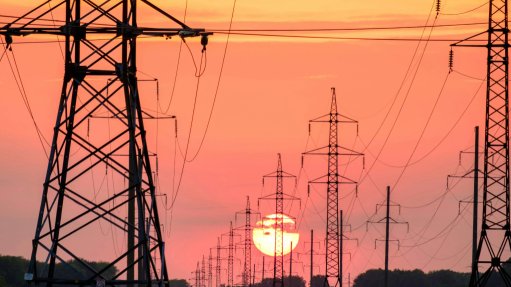Manufacturer donates pipes to shack-conversion project
Manufacturer of water reticulation, drainage and pipe-fitting systems DPI Plastics donated poly- vinyl chloride (PVC) building pipes and fittings to the first- ever shack-to-house eco-replacement project in Kayamandi, in the Western Cape.
The test phase of the Kayamandi project, which was completed in March, involved the conversion of a 23 m2 wooden shack into a solid 46 m2 double-storey home, made entirely from ‘sand bag’ ecobricks built by 16 Kayamandi residents.
The residents were trained and supervised by an engineer from the environment-friendly business development company Africa Responds Clearly’s Eco Homes team.
Kayamandi resident Norie Lungisa lived in the cramped and uncomfortable conditions of her shack, with her two children, for more than ten years. Her new home was officially handed over to her on March 14.
Cape Town-based construction materials supplier PennyPinchers approached 16 of its suppliers, including DPI Plastics, to assist with donations for the Kayamandi project.
DPI Plastics strongly emphasises its support for community development projects, notes the company’s marketing manager Martine Goodchild.
“DPI Plastics is committed to supporting projects that aim to uplift the living standards of South Africans, especially, with regard to adequate housing. The Kayamandi project supports DPI Plastics’ vision of building a better tomorrow, not only by providing residents with better housing facilities but also by creating employment and skills development opportunities for locals. We encourage the use of green building materials which are energy efficient as well,” she says.
DPI Plastics technical and product manager Renier Snyman says the company did not face any challenges during the project.
“Building pipes and fittings comprise 25% to 30% of our production output, so we always have stock readily available for delivery,” he says.
Africa Responds Clearly Eco Homes division spokesperson Grahame Tomes says the Lungisa’s ecohome comprises two upstairs bedrooms, an open-plan lounge, dining and kitchen area and a bathroom.
“It is our plan to help the family gain access to running water and a sewerage connection from the relevant authorities once these authorities can generate enough funds to help the residents of Zone 14, in Kayamandi.
“Very few of the shacks, if any, have clean running water or toilets. “I am personally trying to help several of the residents to be allowed to tap into the water and sewerage points close to their homes,” he states.
Tomes explains that the Kayamandi project ecohouse is built using the ecobrick/ecobeam building system, which uses preplastered and painted ecobricks and ecobeams. The system is certified by the National Home Builders Registration Council (NHBRC).
“All ecobrick houses are built using bricks that are 300 mm × 300 mm. The result of using bricks of this size is a home that is cool in summer and warm in winter,” he explains.
He adds that ecobrick homes deal with numerous serious challenges facing South Africa’s affordable housing industry.
“The 300-mm-thick walls provide a natural barrier to the harsh sun – even in temperatures exceeding 40 °C. “The issues of rising damp, rain and flooding are eliminated, as water cannot rise through sand and is forced downwards into the earth,” explains Tomes.
He points out that the construction of ecobrick homes also empowers communities.
“Residents are provided with employment and skills development, while playing an important role in developing their community. “Under this scheme, we can employ about 1 000 people from each community over three weeks.
“During this time, we train community members and equip them with the necessary skills to build about 120 high-quality, ecobrick/ecobeam homes a month in their respective community,” he adds.
Another advantage of ecobrick houses is a reduction in over- all construction costs when compared with cement-block houses.
“The R84 000 government subsidy for first-time home buyers is sufficient to build a 50 m2 ecobrick/ecobeam double- storey house. “All the tests completed by the Council for Scientific and Industrial Research, the South African Bureau of Standards and the NHBRC indicate that ecobrick houses offer better performance specifications than those built using cement bricks and blocks or even steel-structured houses,” states Tomes.
Despite their initial reservations, he notes that all 48 members of the Loyola Street Committee – where the transformed shack is located – are queuing up to have their shacks replaced too.
“This shack replacement and building of this double-storey home have been a success and would not have been possible without the support of all of our generous donors,” he says.
Tomes states that Africa Responds Clearly’s Eco Homes team is planning a presentation to various councils in the Western Cape to encourage more of these conversions. A presentation has already been made to national government for consideration.
“DPI Plastics is open to involvement in other projects where the aim is to uplift the lives of South Africans. So, should there be more of these projects, we will definitely be involved,” says Goodchild.
Article Enquiry
Email Article
Save Article
Feedback
To advertise email advertising@creamermedia.co.za or click here
Comments
Announcements
What's On
Subscribe to improve your user experience...
Option 1 (equivalent of R125 a month):
Receive a weekly copy of Creamer Media's Engineering News & Mining Weekly magazine
(print copy for those in South Africa and e-magazine for those outside of South Africa)
Receive daily email newsletters
Access to full search results
Access archive of magazine back copies
Access to Projects in Progress
Access to ONE Research Report of your choice in PDF format
Option 2 (equivalent of R375 a month):
All benefits from Option 1
PLUS
Access to Creamer Media's Research Channel Africa for ALL Research Reports, in PDF format, on various industrial and mining sectors
including Electricity; Water; Energy Transition; Hydrogen; Roads, Rail and Ports; Coal; Gold; Platinum; Battery Metals; etc.
Already a subscriber?
Forgotten your password?
Receive weekly copy of Creamer Media's Engineering News & Mining Weekly magazine (print copy for those in South Africa and e-magazine for those outside of South Africa)
➕
Recieve daily email newsletters
➕
Access to full search results
➕
Access archive of magazine back copies
➕
Access to Projects in Progress
➕
Access to ONE Research Report of your choice in PDF format
RESEARCH CHANNEL AFRICA
R4500 (equivalent of R375 a month)
SUBSCRIBEAll benefits from Option 1
➕
Access to Creamer Media's Research Channel Africa for ALL Research Reports on various industrial and mining sectors, in PDF format, including on:
Electricity
➕
Water
➕
Energy Transition
➕
Hydrogen
➕
Roads, Rail and Ports
➕
Coal
➕
Gold
➕
Platinum
➕
Battery Metals
➕
etc.
Receive all benefits from Option 1 or Option 2 delivered to numerous people at your company
➕
Multiple User names and Passwords for simultaneous log-ins
➕
Intranet integration access to all in your organisation


















